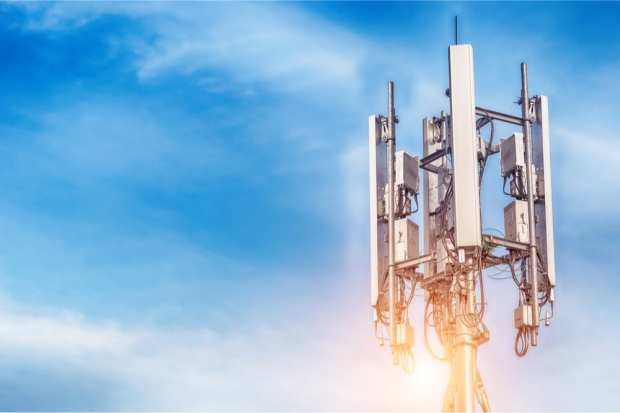Pandemic And Conspiracy Theories Delay 5G At Retail

One of the unsung casualties of the pandemic for retailers may be 5G technology and its rollout. Its proponents had Christmas visions of dressing room tech, augmented reality (AR) experiences and even supply chain efficiencies that grow from the increased bandwidth that the technology can deliver. But a funny thing happened on the way to 5G’s coming out party. Even more bizarre than the pandemic itself was a conspiracy theory that the coronavirus was caused by 5G towers.
For example, a specific conspiracy theory is that 5G radiation is lowering human immune defenses, making people more vulnerable to the virus — a theory that Dr. Simon Clarke, associate professor in cellular microbiology at the University of Reading, has called “complete rubbish,” according to the BBC. These theories have consequences. By May, there were a reported 77 attacks on U.K. phone masts and cell tower employees, RCR Wireless reported, with more in other countries like the Netherlands and the U.S. The conspiracy theories are so prevalent that Twitter has announced it will be adding fact-checking labels to tweets that suggest a link between 5G mobile networks and the coronavirus.
While the direct correlation between 5G and the COVID-19 pandemic has been completely debunked, that doesn’t mean any health concerns should be abandoned.
“There are some health issues to be investigated and some questions to be answered,” says Catherine Rosenberg, Cisco Research Chair in 5G Systems at Canada’s University of Waterloo. “There are tests that still need to be done and organizations that are responsible for this should keep doing their work. There appears to be a small portion of the population that is sensitive to radio transmissions. It might be a big deal and it might not. Let’s continue to investigate.”
Rosenberg says her opinions should be placed in the strict context of technology. She is not a politician, she says, and has no inside knowledge as to when companies such as Apple and Samsung will roll out 5G enabled phones to the masses. As a teacher and student of 5G technology she sees several uses for the technology that could improve the economic climate for retailers as well as the customer experience. The first is the basic bandwidth expansion with 5G that will make all communications better and faster. Weak or intermittent Wi-Fi in retail locations or in malls can be fixed with 5G. Another is the Internet of Things (IoT), which relies in part on the sensor technology that 5G makes more powerful. In order for eCommerce to be enabled at a reliable speed through appliances and voice commerce, 5G will need to be available.
Two other elements of 5G technologies could come into play, especially for shopping centers, department stores and malls. Separately they’re known as “slicing” and “neutral host.” Network slicing is the ability to create “isolated virtual networks” in 5G. These virtual networks can have different design parameters for bandwidth, speed, reliability, security, coverage and service levels. For example, according to Nordic digital services company Tieto, an IoT network or solution can utilize a network slice for the real-time delivery of small information pieces from sensors that are distributed widely apart and could not communicate without 5G. On the other hand, a video streaming service that runs on a mall kiosk needs to have high bandwidth. A mall owner, therefore, can attract and retain tenants by having 5G and cutting “slices” of it for isolated and reliable usage.
The “neutral host” means that a shared network solution is provided on an open access basis to all users and is used to resolve poor wireless coverage inside large venues. In this model, a mall owner could theoretically lease part of its network to an anchor tenant, which generates needed revenue for the mall and needed bandwidth for the tenant as they hopefully adopt new technologies for AR, virtual reality and even the holograms that 5G will enable.
“This is all about sharing bandwidth and sharing infrastructure,” Rosenberg says. “It’s about building connectivity into the retail experience. It’s a huge opportunity if it’s used efficiently.”
5G’s upside is undeniable. The question is when it will be rolled out. Apple did not mention 5G on its most recent earnings call. Verizon, AT&T and T-Mobile are currently locked in a race to align their brands with the technology via devices, marketing and installations. On Wednesday (June 10) Verizon announced it has brought 5G to Detroit. Later this month customers in parts of Indianapolis and Los Angeles will have access to enhanced 5G Home service, and by the end of 2020, 5G Home Internet will be available in 10 cities nationwide.
